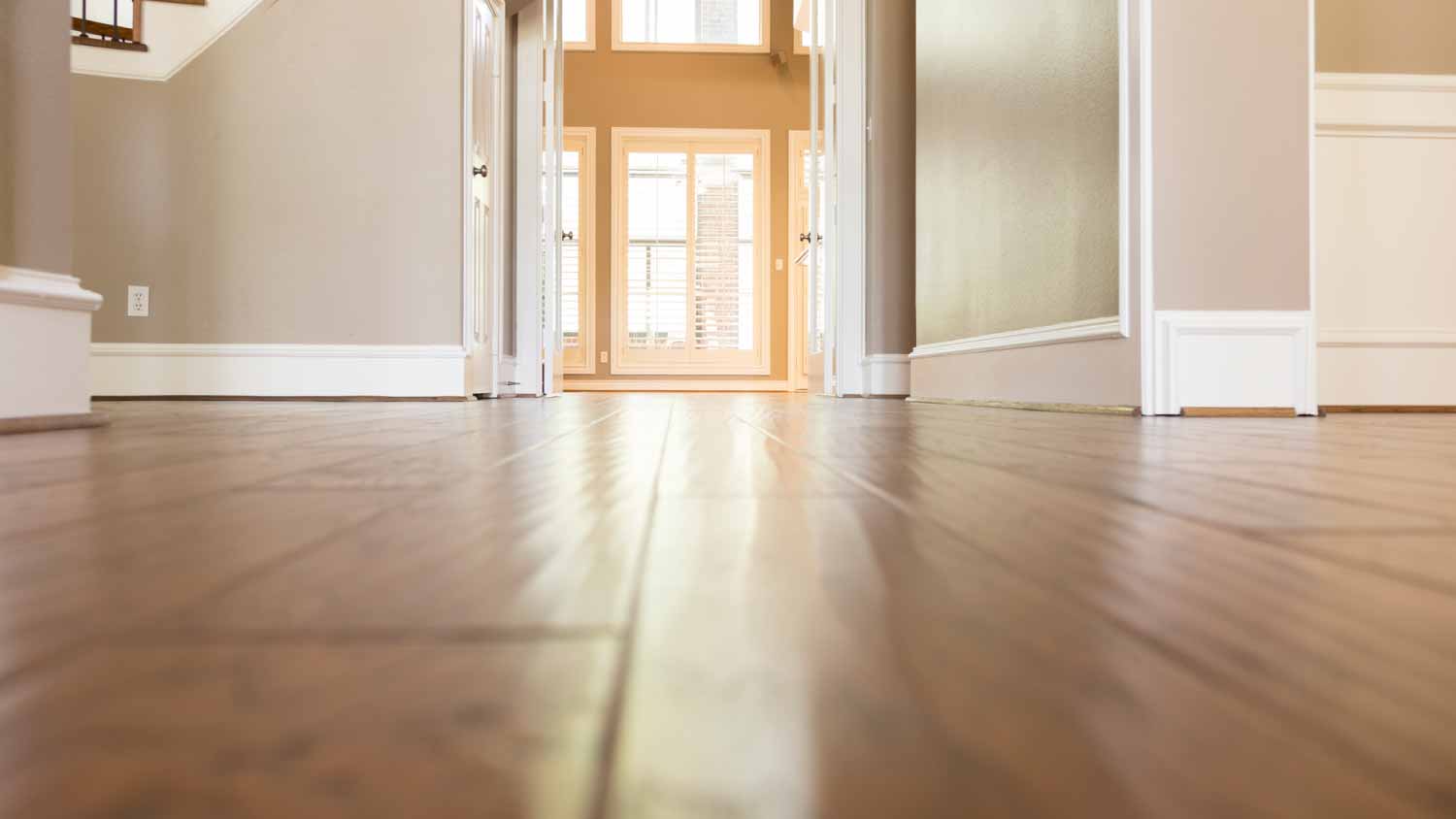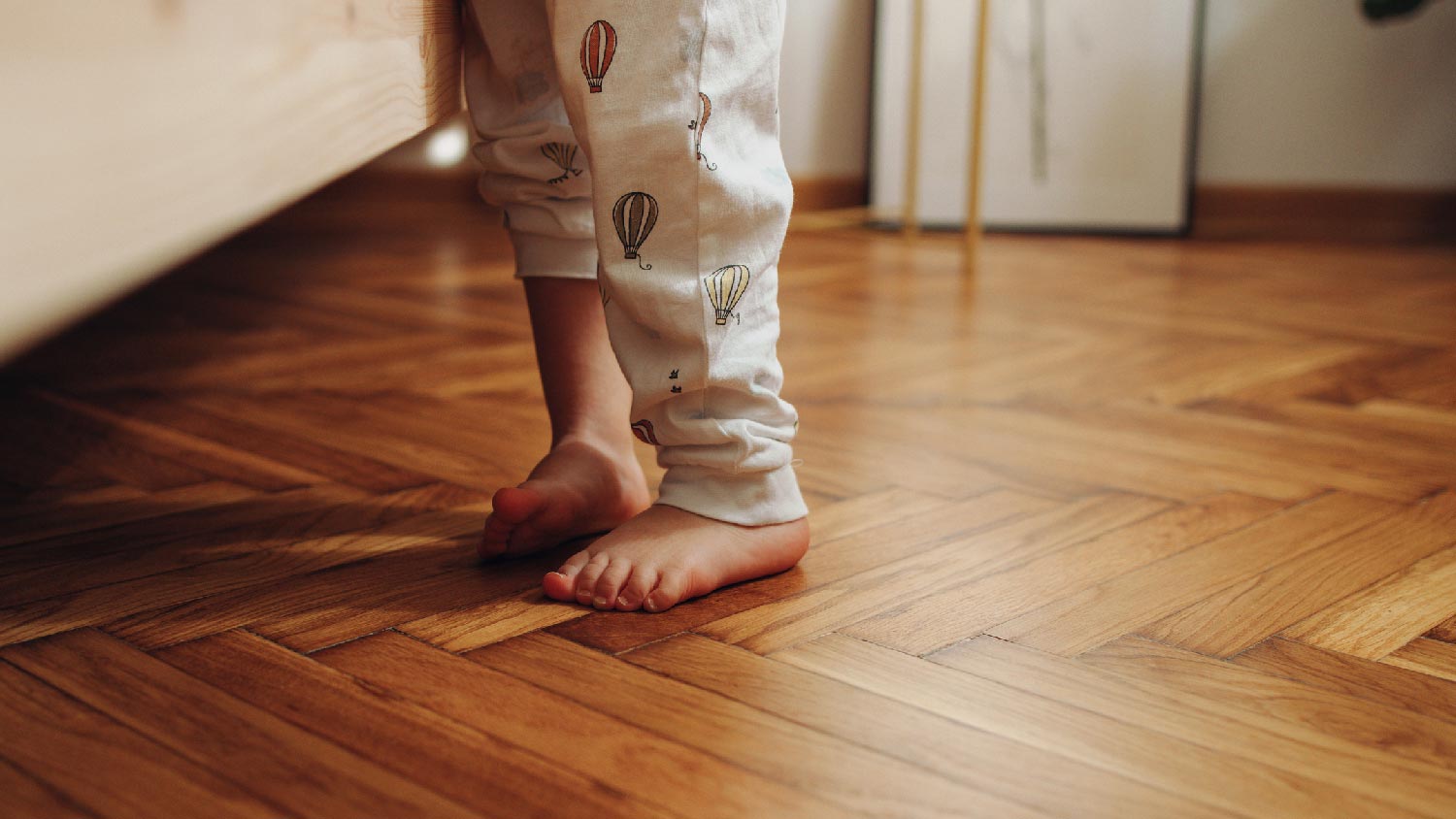What Is Handscraped Hardwood and Is It the Right Choice for Your Home?
Timeless and authentic, this is one distressed wood trend that’s here to stay


When it comes to modern style with an old-world flair, you can’t get much better than classic hardwood flooring. Nowadays, though, there’s a new top contender for luxury, style, and beauty. Handscraped hardwood flooring combines sleek elegance with a cozy, warm, lived-in feel. Keep reading, and you’ll understand why it’s become the flooring of choice both for high-end homeowners and super-savers.
What Is Handscraped Hardwood?
Handscraped wood is a type of hardwood flooring that showcases the natural texture, divots, and lines created during the production process. Each plank of wood will vary from one to the next, displaying the unique grooves from the hand or machine that shaped it. Keep in mind that this differs from distressed wood, which purposely includes rustic signs of age.
Handscraped hardwood gets its name from the once-common technique of using a draw knife to scrape a plank into smoothness. The woodworker would pull a single-blade knife toward themselves to remove shavings and make an even surface with marks typical of wood flooring from days gone by. While handscraping once was done, you guessed it, by hand, it's now mostly done by machine.
Most handscraped wood floors are finished with urethane, a thick, clear substance that provides a durable coating that is easy to clean and requires minimal maintenance.
Is Handscraped Hardwood Worth the Price?
When selecting the perfect hardwood flooring, handscraped hardwood should be top-of-mind. One of the biggest disadvantages of hardwood flooring is that it can easily show wear and tear, collecting dings and scratches like some people collect stamps. But with handscraped hardwood, those added age marks only lend to the distinctive homespun look of the flooring.
But beware; you won’t get a perfect, gleaming finish with handscraped hardwood. If you’re looking for a sleek, ultra-modern, unblemished aesthetic, then this style won’t be for you. If it’s character that you want, then this style will certainly sing to you.
Machines cannot produce authentic, solid handscraped hardwood through a mass manufacturing process—and its price reflects the uniqueness (more on this below). Engineered, composite handscraped hardwood is available at a slightly lower cost, but it’s manufactured by machines, meaning that the dings and dents are pre-fabricated and will be identical to the other boards manufactured in that lot.
Solid or Engineered Handscraped Wood: A Cost Breakdown

You can get handscraped hardwood flooring in both solid and engineered wood varieties. Engineered handscraped hardwood resembles plywood made from several strips of wood pressed or glued together to form single planks. Wider planks are possible with engineered wood, but they are less durable.
No matter the variety, handscraped hardwood is a labor-intensive install that is best left to the pros. In general, you can expect to pay $10-20 per square foot for professional installation. By comparison, standard (non-handscraped) hardwood floors cost an average of $8 per square foot.
Handscraped Hardwood Flooring Pros and Cons
While the one-of-a-kind style of handscraped hardwood catches the eye of most homeowners, it's important to understand its quirks before jumping in. Not only is the material itself more expensive, but it can be more complex to install or switch up in the future. Let's place them side by side and take a look.
Pro: It’s Incredibly Durable
Maintaining hardwood floors is notoriously fussy. Traditional floors are prone to nicks, scratches, and stains even when using the incorrect mop or broom. The uneven and weathered texture of handscraped floors means you don't have to worry about a minor imperfection throwing off the look. Additionally, most floors come with a thick anti-scratch finish that lasts for years.
Con: It Isn't Easy to Install
The labor required to manufacture handscraped floors isn't the only thing that jacks up the price. Flooring contractors often find this variety trickier to install, especially if you're attempting to line up the hew on each plank of wood.
Pro: The Style Is Versatile
There's no need to stick with the traditional oak and maple, though they are beautiful options as well. The handscraping process gives a rugged look to hickory, bamboo, and all hues of teak.
Con: It's Not for Everyone
If you're planning to sell your home in the next several decades, keep in mind that handscraped floors are a unique and expensive option that doesn't always have a great ROI. Some buyers may not love the worn look, especially if the rustic handscraped look is out of style at the time.
Where Should I Install Handscraped Engineered Flooring?
Handscraped engineered flooring can alter the overall aesthetic of a home or highlight the individual style of one room. As a higher-priced installation, start with a room that will show off its beauty—after all, it can handle the high foot traffic. Here are a few ideas to consider.
Living and Dining Room
Whether your home features an open floor plan or separate living spaces, the dining and living rooms are excellent contenders for handscraped floors. Higher square footage and great natural light allow you to show off its unique construction. Pair with complementary wood furniture or decor to tie in the style.
Bedroom
Handcraped flooring adds to the coziness of a naturally inspired bedroom. The option is also ideal for renovating historic homes or homes celebrating their natural surroundings.
Foyers and Hallways
If you're not ready to dedicate an entire room to the handscraped look, consider adding the flooring to transitional spaces in your home. Mudrooms, foyers, hallways, and even enclosed porches are great ways to showcase the look.
Kitchen
Installing hardwood floors in the kitchen can be a dangerous game, but you're safer with the textured handscraped woods. High traffic, a splash of water, or the occasionally fallen plate is unlikely to make a noticeable difference in the surface. And most importantly, they offer a stunning farmhouse style throughout the room.
Tips for Working With a Professional Flooring Contractor
If you’re considering handscraped hardwood, you’ll want to keep a few things in mind when choosing a flooring contractor. Qualify your pros during the interview stage, as the pattern in which the strips are placed makes a huge difference in the final appearance. A contractor should be comfortable taking an artistic approach to handscraped installs. At the very least, it’s important to plan your pattern and layout before beginning the installation carefully. Take the time to play with the configuration of your planks with your flooring expert to ensure you achieve your desired look.





- 11 Types of Flooring to Consider for Your Home
- 9 Hardwood Flooring Tips to Make Installation Easier
- The Differences Between Laminate and Hardwood Flooring, Explained
- Hardwood Flooring Installation: Why You Should Leave it to Professionals
- Estimate Your Flooring Cost With These Factors
- 5 Things You Should Know Before Selecting Hardwood Floors
- How to Choose Hardwood Flooring in 7 Simple Steps
- 4 Wood Floors Perfect for Your Kitchen
- How Long Do Hardwood Floors Last and How to Extend Their Life Span
- How to Remove Hardwood Flooring for Reuse: A Complete Guide










